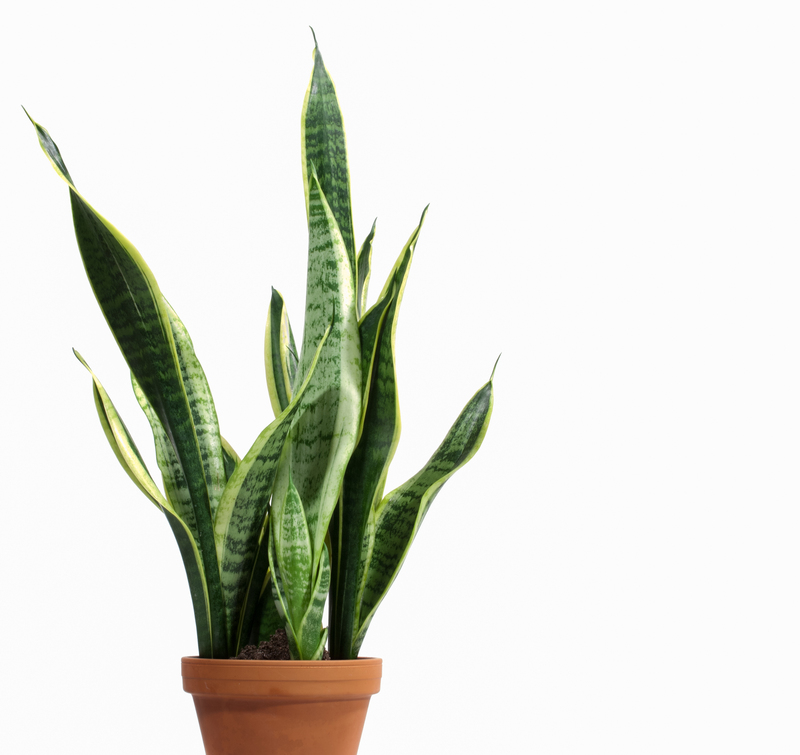Revitalize Your Garden: Hedge Trimming Tips and Techniques
Posted on 05/06/2025
Revitalize Your Garden: Hedge Trimming Tips and Techniques
Is your garden looking a bit unruly or overgrown? Regular hedge trimming is essential for keeping your outdoor space neat, healthy, and inviting. Whether you're aiming for perfectly sculpted topiary or simply a tidy green border, understanding effective hedge cutting methods can transform your landscape. In this comprehensive guide, we'll explore how to revitalize your garden through strategic hedge maintenance. Get ready to discover expert hedge grooming tips and garden rejuvenation techniques!
Why Regular Hedge Trimming Matters
Properly maintained hedges offer more than just curb appeal. Regular hedge pruning comes with a variety of benefits, including:
- Healthier plants: Removing dead or diseased branches helps prevent the spread of pests and diseases.
- Improved aesthetics: Well-shaped hedges create a neat, inviting landscape.
- Encouraged growth: Strategic trimming encourages bushier, more resilient growth patterns.
- Privacy and protection: Dense, well-kept hedges form effective barriers against noise, wind, and prying eyes.
As you'll soon see, hedge shaping is more than a cosmetic exercise--it's an essential gardening practice.

Choosing the Right Tools for Hedge Trimming
To achieve a beautiful, lush hedge, you'll need the right tools for the job. The ideal equipment depends on the size, type, and thickness of the hedge. Here's a rundown of essential hedge maintenance tools:
- Manual hedge shears: Best for fine, precise trimming and shaping work.
- Electric or battery-powered trimmers: Great for medium to large hedges requiring efficient, even cuts.
- Pole trimmers: Useful for reaching higher or deep sections of tall hedges.
- Pruning saws: Necessary for removing thicker, woody branches that trimmers can't handle.
- Gloves and protective eyewear: Essential for safe gardening and avoiding scratches or injuries.
Tip: Keep all blades sharp and clean. Dull tools can damage your hedge, creating ragged cuts that invite disease.
When is the Best Time to Trim Hedges?
Knowing when to trim your hedges can make all the difference in their growth and vitality. Timing hinges (pun intended!) on the species and the intended outcome:
- Evergreen hedges: (e.g., boxwood, yew) Generally, trim in late spring and again in late summer to maintain shape. Avoid heavy pruning in fall, as new growth may be damaged by winter frost.
- Deciduous hedges: (e.g., beech, hornbeam) Best pruned in late winter or early spring while plants are still dormant.
- Flowering hedges: Trim immediately after flowering to prevent removing buds for next year's blooms.
Pro tip: Never trim during drought or heat waves. Your hedges need energy and water to recover from trimming!
Hedge Trimming Techniques for a Perfect Finish
Mastering various hedge shaping techniques ensures your garden looks polished and professional. Let's explore the most effective approaches.
1. Basic Shaping: The Tapered Cut
- Goal: Make the base slightly wider than the top, allowing sunlight to reach all leaves.
- Method: Visualize or mark the desired shape. Use stakes and twine for a straight guide. Trim the sides, angling slightly outward from top to base.
This classic method promotes even growth and prevents leafless "bare legs" at the bottom.
2. Formal vs. Informal Hedges
- Formal hedges: Require frequent, precise trimming to maintain crisp, geometric lines. Great for boxwoods and privets.
- Informal hedges: Allow for a more natural, flowing shape. Trimming should focus on maintaining health and encouraging density.
Choose the style that best complements your garden's theme!
3. Dealing with Overgrown Hedges
- Cut back hard in late winter or early spring.
- Remove up to one-third of the plant's height in a single session.
- Prune back side shoots to stimulate bushier, healthier regrowth.
Give your hedge time to recover--a rejuvenation prune may take a few seasons for the best results.
4. Topiary and Creative Shapes
- Mark your desired outline with string or cardboard templates.
- Start with coarse trimming, then refine shapes with hand shears.
- Be patient and trim in stages.
Topiary hedges can add whimsy and personality--perfect for a unique garden centerpiece!
Common Hedge Trimming Mistakes (And How to Avoid Them)
- Cutting at the wrong time: Pruning during extreme heat or cold can stress plants and reduce growth.
- Ignoring shape: Failing to maintain a tapered form leads to thin, unhealthy lower branches.
- Using blunt tools: Ragged cuts make hedges more susceptible to disease.
- Over-pruning: Removing too much foliage at once can shock the plant.
- Neglecting clean-up: Leaving clippings on hedges or the ground can harbor pests and fungi.
Careful planning and proper maintenance are key to lush, thriving hedges!
Essential Aftercare Tips for Healthy, Vibrant Hedges
- Water thoroughly after pruning: This helps reduce stress and aids in quick recovery.
- Mulch the base: A layer of organic mulch retains moisture and suppresses weeds.
- Inspect for pests and diseases: Address any problems promptly with appropriate treatments.
- Fertilize lightly: Apply a balanced fertilizer in spring for healthier regrowth.
Remember: Even hardy hedges benefit from some post-trim TLC!
Selecting the Right Hedge Species for Your Garden
If you're looking to revitalize your garden with new hedges, consider your local climate, soil, and goals. Here are some popular choices:
- Boxwood: Classic, slow-growing, perfect for low formal hedges and topiary.
- Privet: Fast-growing and adaptable; easy to trim for geometric shapes.
- Yew: Long-lived, tolerant, and ideal for taller, traditional hedges.
- Lonicera (honeysuckle): Hardy, evergreen option, great for privacy.
- Beech and hornbeam: Deciduous, maintain leaf cover in winter, good for natural-looking screens.
- Escallonia and lavender: Flowering hedges that attract pollinators and add seasonal color.
Matching the hedge to your maintenance preferences and climate conditions is the most important step to long-term hedge health.
Hedge Trimming Tips for Different Seasons
Spring Hedge Care
- Light shaping: Focus on removing dead or damaged branches left by winter.
- Feed with slow-release fertilizer: Encourage strong, new growth.
Summer Hedge Maintenance
- Trim to maintain shape: Hedges tend to have their growth spurt during these months.
- Check for nesting birds: Postpone trimming if birds are present. The UK's Wildlife & Countryside Act, for example, protects nesting birds in hedgerows.
Autumn Preparation
- Final trim of the year: Avoid stimulating new growth ahead of winter's frost.
- Mulch and tidy up: Prepare hedges for the dormant season ahead.
Winter Trimming
- Dormant pruning: For deciduous hedges, winter is perfect for more drastic shaping or rejuvenation.
- Avoid trimming evergreens: Wait until warmer weather for these species.
Eco-Friendly and Wildlife-Wise Hedge Management
Hedges are incredible wildlife habitats, offering shelter to birds, insects, and small mammals. Remember to trim with care:
- Check for nests before cutting, especially in spring and summer.
- Use manual tools when possible to reduce noise and pollution.
- Leave some areas untrimmed as a haven for pollinators and beneficial insects.
- Opt for native species which support local wildlife better than exotics.
- Compost clippings rather than burning; they make nutritious mulch after decomposing.
How to Revitalize an Old or Neglected Hedge
Old, woody, or sparse hedges can be brought back to life with patience and care:
- Rejuvenation pruning: Gradually cut back hard over several seasons rather than in one go.
- Feed regularly: A balanced fertilizer aids in strong regrowth.
- Add mulch: Conserve moisture and provide nutrients to revive tired roots.
- Monitor for pests and disease: Older hedges may be more vulnerable.
With consistency, even an overgrown or sparse garden hedge can regain its lush, vibrant appearance!

Expert Hedge Trimming Tips for Beginners
- Start slow: Trim in multiple light passes for better control and finish.
- Step back: Frequently check your progress from a distance to ensure symmetry.
- Listen to your plants: Let the growth habit of your hedge guide your technique.
- Follow safety guidelines: Wear protective gear and be cautious on ladders.
- Don't fear experimentation: Over time, you'll develop your own style and preferences!
Conclusion: Transform Your Garden with Smart Hedge Trimming
A well-trimmed hedge is the backbone of a tidy, vibrant landscape. By following these hedge trimming tips and techniques, you'll not only enhance your garden's appearance but also boost its health, wildlife value, and year-round appeal. Whether you're maintaining a stately yew, a blooming lavender hedge, or an artistic topiary, a little knowledge and careful attention can make your outdoor space truly extraordinary.
Ready to pick up your shears? Revitalize your garden, and let your hedges shine!
```
